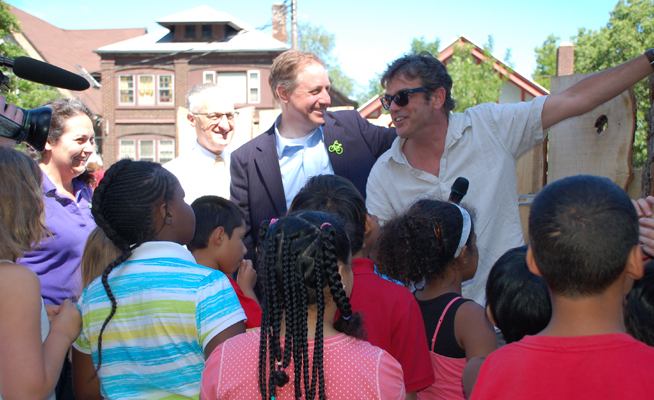Social Sustainability
Social sustainability is about promoting social interaction and cultural enrichment while protecting the community’s most vulnerable citizens, putting a premium on social capital and respecting social diversity in all of its forms. Ultimately related to building and uniting community through social and environmental action, social sustainability is also rooted in providing the basic human needs of happiness, love, safety, dignity and freedom for all community members.
We believe that if you put your community first, you will ultimately grow a smarter and stronger institution in the long run--no exceptions. The social benefits of thinking and acting locally include building institutional capacity, improving the health of the community, contributing to functional democracy, increasing self-reliance and security, saving energy, building community and celebrating diversity. But most importantly, thinking and acting locally allows an institution to create local knowledge, tap into local creative talent, build strong relationships, and achieve the innumerable yet intangible measures of happiness.

When your institution becomes more self-reliant and more locally oriented, the institution will ultimately become healthier and stronger. This mutually beneficial partnership between community and museum feeds on itself and creates an intricate web of interdependence, which also creates a shared sense of local ownership and pride. By working locally, growing your staff’s talents internally rather than relying on out-of-area consultants, your staff gain the skills to do even more.
Community HealthBuilding strong relationships, creating a caring culture, increasing a city’s self-reliance and nurturing a collaborative spirit are some of the many intangible community health benefits that come from taking a local approach to your museum work. These all revolve around creating an institution that feels warmer, more humane, inclusive and welcoming, because you have invited the community to engage in ways far more significant than simply as visitors. You have asked others to help shape your ideas, contribute talents to your exhibits, donate to your campaigns, share knowledge and expertise with others, and create a new vision together. That is very powerful. For a great overview of community benefits of working locally from a community health perspective, read Rick Brook’s article, “Who’s Local and Why Does it Matter?”
Or, for more insight into how and why businesses with a local focus help their communities, build employee trust, take a look at the following articles. The first is called Locally Owned Businesses Contribute to the Heath of Their Communities. Another article by Brad Rawlins about the relationship between organizational transparency and employee trust is also worth a read.
Though no studies have been undertaken within the children’s museum field to date regarding the educational impact of a local initiative and a place-based pedagogy on learning, significant research has been conducted within the green school community, and amongst members of the Place-Based Education Evaluation Collaborative, the Power of Place organization, and Antioch University New England Institute’s Co-Seed program. Each of these studies indicates that placed-based education fosters students’ connections to place, creating vibrant partnerships between school and community while boosting student achievement and improving social, environmental, and economic vitality. Students in each of these studies became engaged citizens, taking care of their world by developing a better understanding of where they live and how to contribute to their community.
Check out this video about the benefits of education for sustainability and a place-based education approach by one of the leaders in the field, David Sobel of Antioch University New England, or these articles All of a Place, to learn more about the importance of a local pedagogy for learning. For a wonderful primer on local learning in the classroom, read Greg Smith and David Sobel’s book, Place-and Community-Based Education in Schools.

